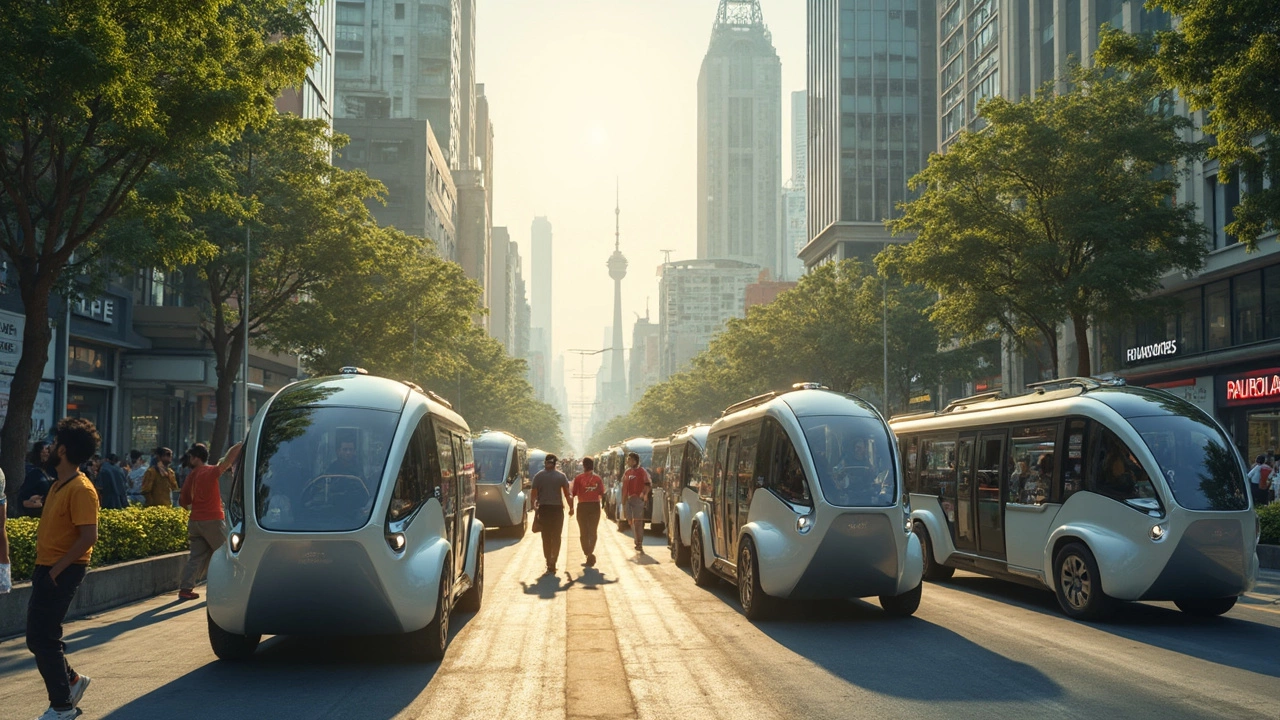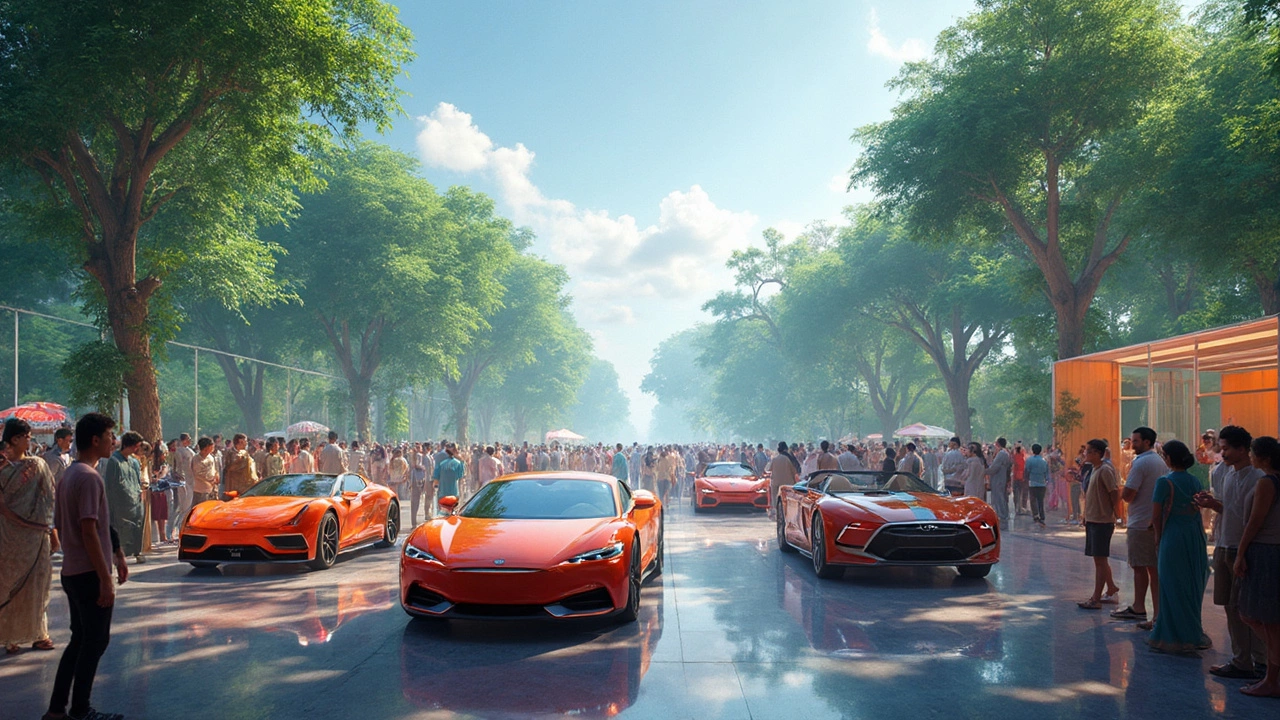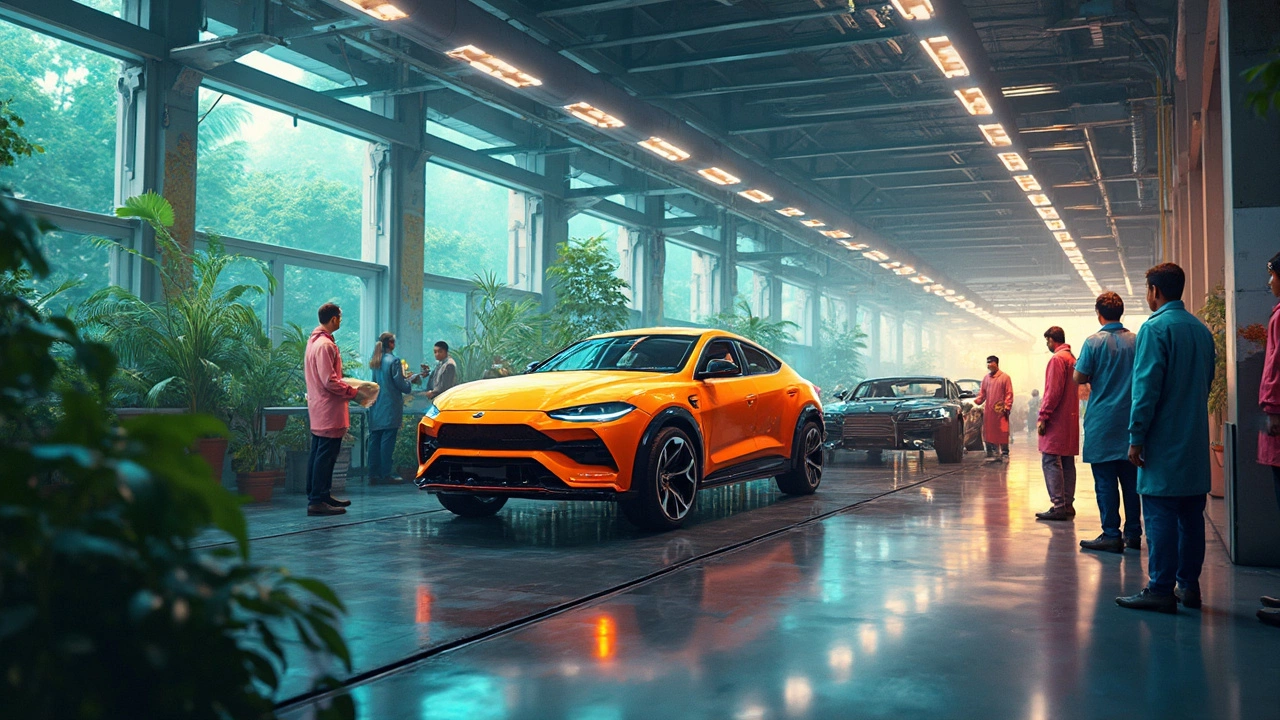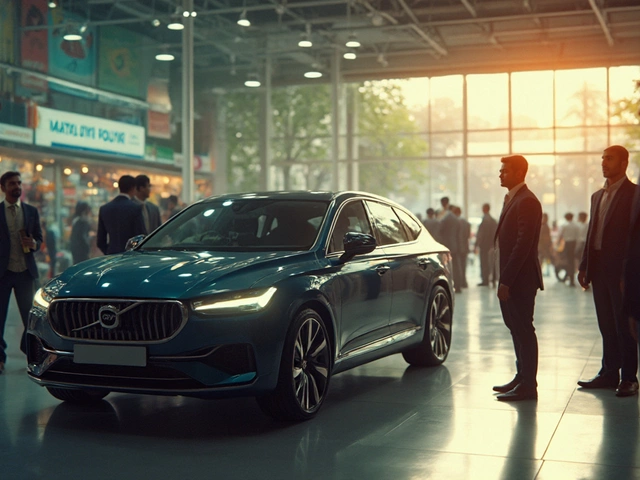India's automobile industry is a whirlwind of growth and innovation, with several big players jostling for the top position. But who actually sits at the pinnacle of production and influence? Let's dive into the world of gears and engines to figure out the leading automobile manufacturer in the country.
The Indian automotive market isn't just about producing cars; it's about weaving technology, economy, and sustainability into one dynamic drive. Each company vies for the spotlight with its unique blend of tradition and modernity. Whether it's eco-friendly electric vehicles or hefty SUVs, there's a lot more going on under the hood.
So, what's driving these companies to such heights? It all boils down to more than just numbers. Sure, market share and production stats tell part of the story, but innovation, customer engagement, and global outreach add whole new layers. Stay with us as we explore how these companies are redefining the roads, not just in India, but around the globe.
- A Brief History of Indian Automobiles
- Who Rules the Market Today?
- Innovations and Breakthroughs
- Challenges and Future Prospects
- The Global Impact of Indian Manufacturers
A Brief History of Indian Automobiles
If you've ever wondered how India's auto scene hit the fast lane, you're about to get a crash course. The journey goes way back to the 1940s when the country just started to dabble in making cars. Unlike the instant hits you might see today, this was more of a cautious roll-out. The government played a big role, aiming to boost local manufacturing.
Back in the day, it all started with Hindustan Motors and its iconic Ambassador, a car that's practically Indian royalty. Then, the 80s shook things up when Maruti Suzuki launched the revolutionary Maruti 800. This little car was a game changer, opening the market to the masses and marking the birth of modern auto manufacturing in India.
Fast forward to the late 90s and early 2000s, the market was buzzing. Names like Tata Motors and Mahindra & Mahindra became legends in the industry. They didn’t just stick to cars; they branched out into SUVs and commercial vehicles, helping to drive rural and urban markets alike.
Today, the Indian car industry isn’t just looking inward. Companies are eyeing foreign markets, exporting vehicles, and even setting up shops overseas. They're bringing everything from budget cars to high-end electric models to the table, proving that Indian innovation can go toe-to-toe with global giants.
To wrap it up, India's journey from its humble beginnings to a key player on the global automotive stage is nothing short of inspiring. The country's manufacturers are not just keeping pace; they're often setting trends.
Who Rules the Market Today?
In the bustling world of India's automobile industry, Maruti Suzuki has long been the kingpin. This company, a household name since its inception in the 1980s, holds a significant portion of the market share. From budget-friendly cars to efficient after-sales service, they've nailed it in winning over Indian customers.
But they're not cruising alone. Hyundai is hot on their heels, and let's not forget about Tata Motors, especially with their aggressive push in the electric vehicle segment. Tata's charm lies in its diverse offerings—from rugged SUVs to sleek electric cars—catering to an eco-conscious audience.
Mahindra & Mahindra also makes the list, especially popular in the SUV and tractor segments. Known for their robust designs, they're well-rooted in rural dynamics. Meanwhile, Honda and Toyota focus on durability and fuel efficiency, excelling in the sedan and compact SUV categories.
Let's peek at some quick numbers that spell it out better:
| Manufacturer | Market Share (%) |
|---|---|
| Maruti Suzuki | ~45 |
| Hyundai | ~18 |
| Tata Motors | ~15 |
These figures change, of course, as companies innovate and consumer preferences evolve. With the advent of electric vehicles, the game's changing fast, and everyone wants a piece of the action. The push towards cleaner and greener options isn't just a trend—it's the future.
So, while Maruti Suzuki enjoys its reign at the top, others are revving up to close the gap. The competition's fierce, but in an ever-growing market, there's room for everyone to shine.

Innovations and Breakthroughs
When it comes to shaking things up in the India automobile manufacturer scene, several companies are steering the wheel towards innovation like never before. With a strong focus on sustainability and technology, these manufacturers are not only meeting current demands but are paving the road for the future.
The rise of electric vehicles (EVs) has been one of the most significant trends. Some of the leading Indian car makers have aggressively entered the EV market, designing vehicles that are both affordable and practical for the average consumer. Companies have made strides in extending battery life and reducing charging times, which is a leap forward in the EV sector.
In addition to EVs, smart technology integration is getting a lot of attention. Manufacturers are installing advanced infotainment systems, AI-driven safety features, and even autonomous driving capabilities in select models. This surge in technology isn't just about adding gadgets; it's about making driving safer and more enjoyable.
Another interesting development is the use of lightweight materials that help improve fuel efficiency without compromising safety. By incorporating materials like high-strength steel and aluminum, Indian manufacturers are reducing vehicle weight, thus enhancing fuel economy, which is a huge win for consumers looking to save on fuel costs.
An eco-friendly approach isn’t limited to electric vehicles. Some companies are investing in greener production methods and more sustainable supply chains. They're setting benchmarks by minimizing waste and using recyclable materials wherever possible.
To illustrate, here's a quick look at how these innovations pan out:
| Innovation | Impact |
|---|---|
| Electric Vehicles (EVs) | Reduced dependency on fossil fuels |
| Smart Technology Integration | Improved safety and user experience |
| Lightweight Materials | Better fuel efficiency |
| Eco-friendly Production | Lower carbon footprint |
With India racing towards becoming a global hub for automobile manufacturing, these innovations are more than just trends—they represent a commitment to keep the industry moving forward in every sense. Watch this space as Indian car industry leaders continue to push boundaries.
Challenges and Future Prospects
India's automobile industry isn't all fast lanes and autopilot glory; there are bumps and roadblocks to navigate. One of the major challenges is the shift towards electric vehicles (EVs). While EVs are the future, the infrastructure isn't fully there yet. Charging stations are like rare Pokémon—hard to find, especially outside major cities.
Additionally, the competition is heating up, not just internally but globally. Companies need to keep innovating to stay ahead. It’s a bit like a never-ending game of chess, where every move needs a counter-move to keep the Indian car industry relevant on the world stage.
Let's not forget the environmental regulations becoming stricter each year. The need to produce greener cars is sharper than ever, and this can be both a challenge and an opportunity. It's a race to achieve that perfect balance between being eco-friendly and cost-effective.
As for the future prospects, the automotive industry leader in India can take inspiration from countries that have aced electrification, among other things. There's talk of self-driving cars and advanced AI in driving systems. These could transform India’s automotive landscape dramatically over the next decade.
Here's a quick look at potential quick-win strategies for the future:
- Ramp up EV and hybrid vehicle production to meet rising demand, especially in urban hubs.
- Invest in research and innovation focusing on sustainable technologies.
- Collaborate with tech firms for AI and automation-focused initiatives.
- Strengthen the supply chain resilience by diversifying suppliers and sourcing locally.
- Focus on expanding global presence, particularly in emerging markets.
In conclusion, while challenges abound, they're not insurmountable. The companies leading in these efforts could very well be the ones dictating the future track of India's automobile manufacturing.

The Global Impact of Indian Manufacturers
When you think about the leading car maker in India, it's easy to imagine a company focused only on its home turf. But Indian automobile manufacturers are playing a bigger game, creating ripples all over the globe.
Take Tata Motors, for example. Known for their value-driven innovation, they've been making waves not just in India but on international roads too. Remember the hugely popular Tata Nano? While it was marketed as the world's cheapest car mainly for India, the ambition behind it caught the world's attention. Plus, Tata's acquisition of iconic brands like Jaguar and Land Rover has elevated their profile worldwide, showing that Indian manufacturers can hold their own among global giants.
Another heavyweight, Mahindra & Mahindra, isn't just about making hardy SUVs and tractors. They’re a key player in the electric vehicle (EV) scene as well. With several initiatives and a vision for cutting down emissions, Mahindra is charging ahead in the global push towards sustainable transport. Their vehicles are now being sold in countries across Europe, Africa, and even Latin America, underlining their worldwide reach.
The Indian automotive sector isn't just about sending cars abroad. It’s about technology, partnerships, and spreading India's influence through automotive excellence. Companies like Bajaj Auto Ltd. have dominated in the two-wheeler segment globally, especially with models like the Bajaj Chetak electric scooter making a comeback, adding another green feather to India's cap.
Even during the pandemic, India's prowess in auto manufacturing shone through. In 2022, the country's auto exports saw an increase, showcasing resilience and adaptability. Here's a quick look at how some Indian automobiles are faring globally:
| Manufacturer | Regions Exported | Top Exported Models |
|---|---|---|
| Tata Motors | Europe, Africa, Middle East | Tata Nexon, Tata Tiago |
| Mahindra & Mahindra | Europe, North America, Latin America | Mahindra Scorpio, Mahindra Thar |
| Bajaj Auto Ltd. | Latin America, SE Asia, Africa | Bajaj Pulsar, Bajaj Dominar |
With such expansive operations and ambitions, the Indian car industry isn't just building vehicles; it's building bridges across communities and pushing for a greener planet. This means if you're eyeing an Indian car or bike, you're part of a global movement that's all about innovation and sustainability.






